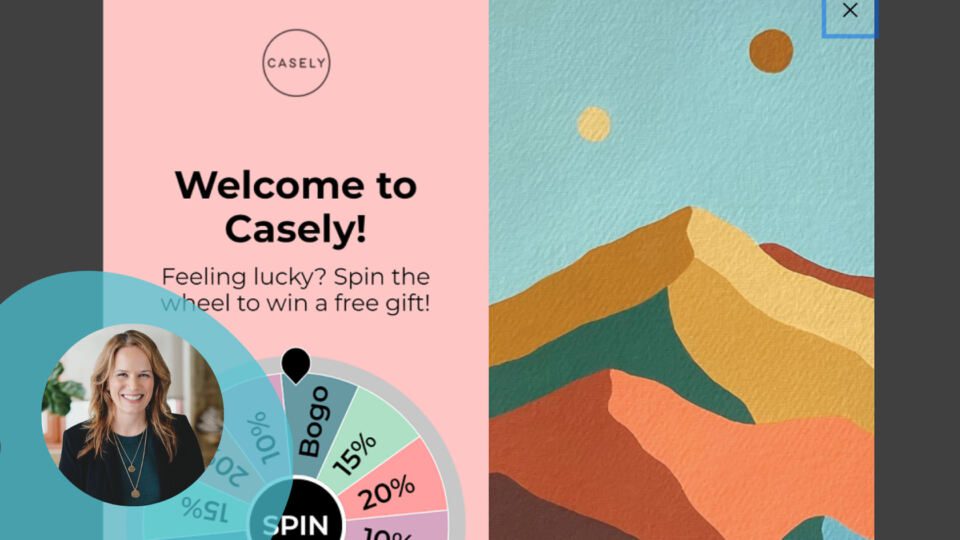It’s becoming harder for retail brands to reach their audiences as consumers continue to use a mix of online and in-person shopping. And in the constant quest to improve the shopping experience, offering stellar products isn’t enough. Keeping shoppers engaged — and even entertained — during the buying process has become critical.
However, as privacy regulations evolve and as web browsers like Google look to stop supporting third-party cookies, retail marketers need to pivot the ways in which they engage their customers.
That’s why gamification — using gaming elements like points, competition and rules in non-gaming contexts — is experiencing a renaissance in the shopping world. Not only is it an effective way for brands to collect both first- and zero-party customer data, but retailers are using this convergence of shopping and entertainment as an opportunity to enhance their online shopping experience and fuel sales and brand loyalty.
Gamification is Entertainment
Brands use gamification to increase engagement with their customers and to encourage them to buy their products. But how they use it can vary, depending on their audience and community.
Fitness app Fitbit offers gamified experiences through its Fitbit Premium plan. The brand encourages members to participate in challenges with friends, such as “Adventure Races” and “Get Fit Bingo,” where they compete with friends to see who can be the first to complete various activity goals, such as walking 10,000 steps.
Brands are also creating gamified experiences within their loyalty programs. Many of these programs often have tiers or levels in which members must complete certain tasks — or spend a certain amount of money — to win points and progress to the next tier.
When Starbucks loyalty members use their My Starbucks Rewards during a purchase, they receive a certain number of stars. As the stars build up, customers can get various items for free, ranging from a customizable beverage (25 stars) to Starbucks merchandise (400 stars).
But gamification isn’t just about the rewards; it’s a form of entertainment. As consumers spend more time online — and on their phones — offering engaging and entertaining digital experiences has become vital. Many retailers are seeing entertaining, gamified experiences as an opportunity to boost revenue and customer retention.
Consumer Experiences and ‘Shopatainment’
Only offering first-rate products isn’t enough for a brand to thrive in today’s world. In fact, 79% of consumers say that the experience a brand provides is just as important as its products or services. With this need for quality customer experiences in mind, brands are starting to deliver digital and real-life experiences in addition to creating consumer satisfaction with their products. You can say they’re investing in “shopatainment” — the blending of entertainment, commerce, and content.
But shopatainment — seen in livestreaming, influencer marketing, metaverse experiences and more — isn’t just another temporary marketing trend. It’s spreading like wildfire and doesn’t seem to be going anywhere anytime soon.
Take TikTok, which supports ecommerce features through partners like Shopify. When they hosted a shoppable livestream event with Walmart in March 2021, the retail giant gained seven times more views than anticipated. Walmart also grew its TikTok follower base by 25% through this event.
For brands that don’t have the marketing teams of a Walmart but the desire to reach their customers in a meaningful way at scale, there are other effective ways to integrate shopatainment and gamification — like with spin to win displays and online quizzes.
Spin-to-Win Displays and Online Quizzes
Spin-to-win wheel displays greet shoppers when they enter a brand’s website. Users spin the (digital) wheel on the screen, see a potential prize they can win, and receive it if they take a certain action — like providing their contact information or completing a purchase. Take iPhone and Samsung phone case provider Casely, which greets website visitors with this type of gamified SMS and email opt-in experience. Since activating their spin-to-win sign-up unit, they’ve seen a 60% increase in SMS conversions.
Most of the time, each section of the wheel features a different prize users can win, creating excitement and curiosity about which incentive they’ll land on. This makes spin-to-win wheels a fun and engaging way to encourage shoppers to opt in — and to keep them coming back for more.
Online quizzes are another form of gamification — and an effective means of collecting zero-party data — that brands use to engage and entertain consumers. For example, health and wellness brand Cheers offers a seven-question quiz for website visitors to take if they aren’t sure which product is best suited for them. Similarly, clothing brand NYDJ encourages subscribers to take an online quiz to find their ideal fit and style.
Bottom line: Gamification has arrived, and it’s here to stay. In today’s era of evolving privacy regulations, implementing gamification strategies can help retailers navigate these murky waters while offering the engaging shopping experiences consumers are looking for.
Sara Varni is the CMO of Attentive, leading Strategic Global Marketing to further build the Attentive brand to reinvent business-to-consumer communication and commerce in the mobile age. With deep experience in the marketing and ecommerce industry, Varni has a strong background in scaling marketing teams in a fast-growth environment and driving demand for expanding markets and products. Most recently she was CMO at Twilio, responsible for growing the community of developers and bringing the company into the enterprise market. Previously she led go-to-market strategy and positioning at Salesforce for over 10 years in various roles, including SVP of Product Marketing for its leading sales platform, Sales Cloud.




